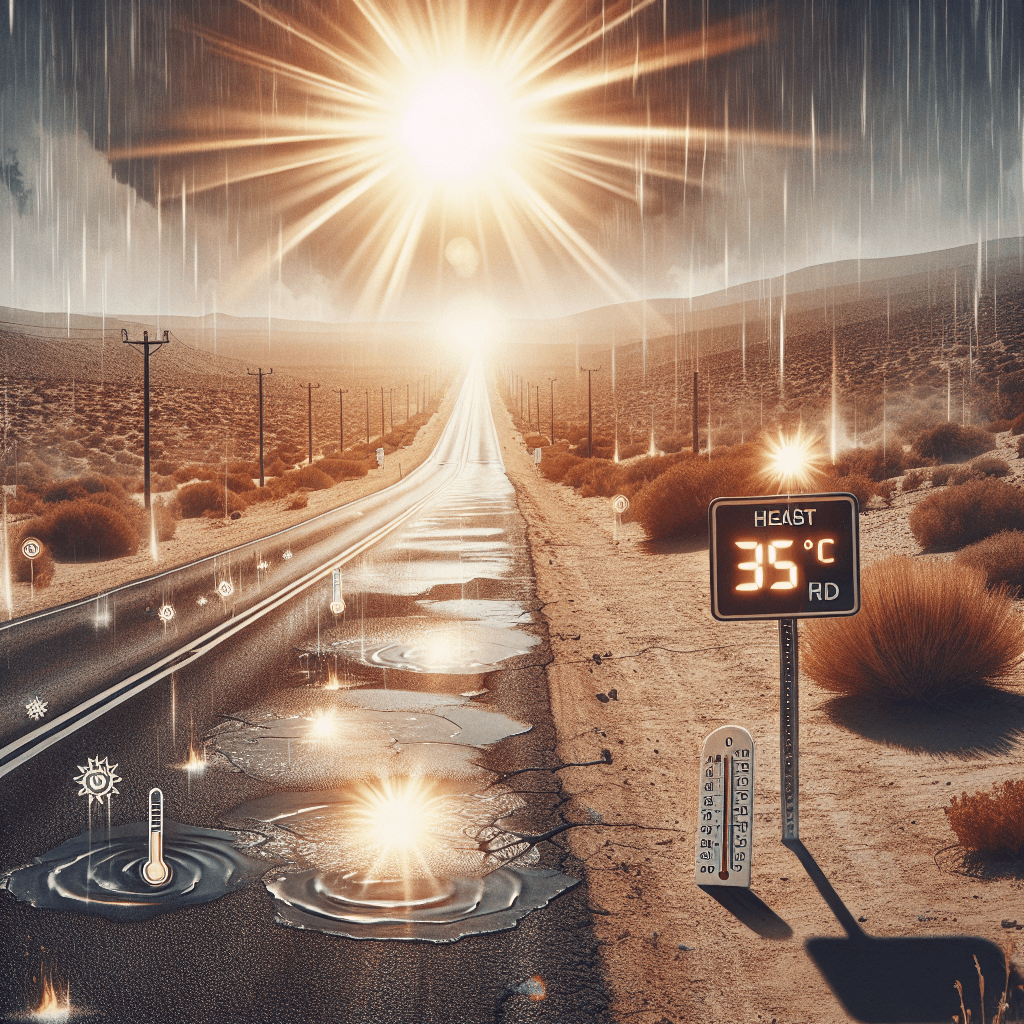Why do roads look wet on hot days when they are perfectly dry
That shimmering puddle you see on the hot road isn't water at all; it's a real-life mirage caused by heat bending an image of the sky down to the asphalt.


Too Long; Didn't Read
It's a mirage. Hot air rising from the road bends the light from the sky. Your brain interprets this shimmering, bent light as a reflection on a puddle of water.
Mirage on the Motorway: Why Do Roads Look Wet on Hot Days When They Are Perfectly Dry?
Have you ever been driving on a long, straight road on a blistering summer day and seen what looks like a shimmering puddle of water in the distance? As you get closer, however, the "puddle" magically vanishes, leaving behind nothing but dry, hot asphalt. You weren't imagining it. This common and curious phenomenon is a perfect example of a real-life optical illusion. It’s not a sign of a water leak or a heat-induced hallucination; it's a fascinating display of physics at work. This post will demystify this highway heat haze, explaining the science behind why the road ahead often looks wet when it is bone dry.
It's Not Water, It's a Mirage: A Trick of the Light
The "wet" spot you see on a hot road is a type of optical illusion known as a mirage. Specifically, it's called an inferior mirage. The term "inferior" doesn't mean it's of low quality; it refers to the fact that the mirage image appears below the real object. In this case, the image is a reflection of the sky appearing on the road surface.
This isn't your mind playing tricks on you in the traditional sense. A mirage is a naturally occurring optical phenomenon caused by the bending of light rays as they pass through layers of air at different temperatures. It's the same principle that makes stars appear to twinkle in the night sky.
The Bending of Light: How Refraction Works
To understand a mirage, we first need to understand a key concept in physics: refraction. Refraction is the bending of a wave—in this case, light—as it passes from one medium into another. You see this every day when you put a straw in a glass of water and it appears to be bent or broken at the water's surface.
Light travels at different speeds through different materials, or "mediums." The key factor here is density.
- Cold air is denser and more compact, causing light to travel more slowly.
- Warm air is less dense and more spread out, allowing light to travel faster.
When light rays pass from a cooler, denser medium to a warmer, less-dense one at an angle, they bend. This bending is the secret ingredient behind the phantom puddle on the road.
Creating the "Puddle": The Perfect Conditions
The illusion of a wet road is created by a specific set of conditions that come together perfectly on a hot, sunny day. Here is the step-by-step process:
- The Sun Heats the Road: Dark-colored asphalt is excellent at absorbing solar radiation, causing its surface to become extremely hot—often much hotter than the air just a few feet above it.
- A Layer of Hot Air Forms: This intensely hot road surface heats the layer of air directly in contact with it. This creates a sharp temperature gradient: a very thin layer of hot, less-dense air just above the road, with cooler, denser air sitting on top of it.
- Light from the Sky Travels Downward: Light rays from the bright sky travel down towards the road. As they approach the superheated layer of air near the asphalt, they enter a less dense medium.
- The Light Bends Upward: Instead of hitting the road, the light rays speed up and bend—or refract—upwards in a gentle curve towards your eyes.
- Your Brain Interprets the Illusion: Your brain is wired to assume that light travels in straight lines. It doesn't register the curve. It interprets the light ray from the sky as having traveled in a straight line from the road's surface. Because your brain perceives this bright, blue light from the sky as a reflection on the ground, it concludes there must be something reflective there—like a pool of water.
Why the Shimmer?
The shimmering quality of the mirage adds to its watery appearance. This happens because the layer of hot air above the road is not static. It is constantly rising and mixing with the cooler air above it in small, turbulent currents. This constant movement causes the light rays to waver and distort slightly as they travel to your eyes, creating the familiar rippling effect we associate with a water surface.
Conclusion
So, the next time you're on a road trip and see that distant, shimmering puddle, you'll know exactly what you're looking at. It's not water, but an elegant display of physics called an inferior mirage. This illusion is a powerful reminder of how our perception of the world is shaped by the fundamental laws of nature. The "wet" road is simply the result of light from the sky taking a curved path through heated air to reach your eyes, creating a convincing reflection where there is none. It’s one of nature’s cleverest tricks and a perfect example of science in action, right outside your car window.


